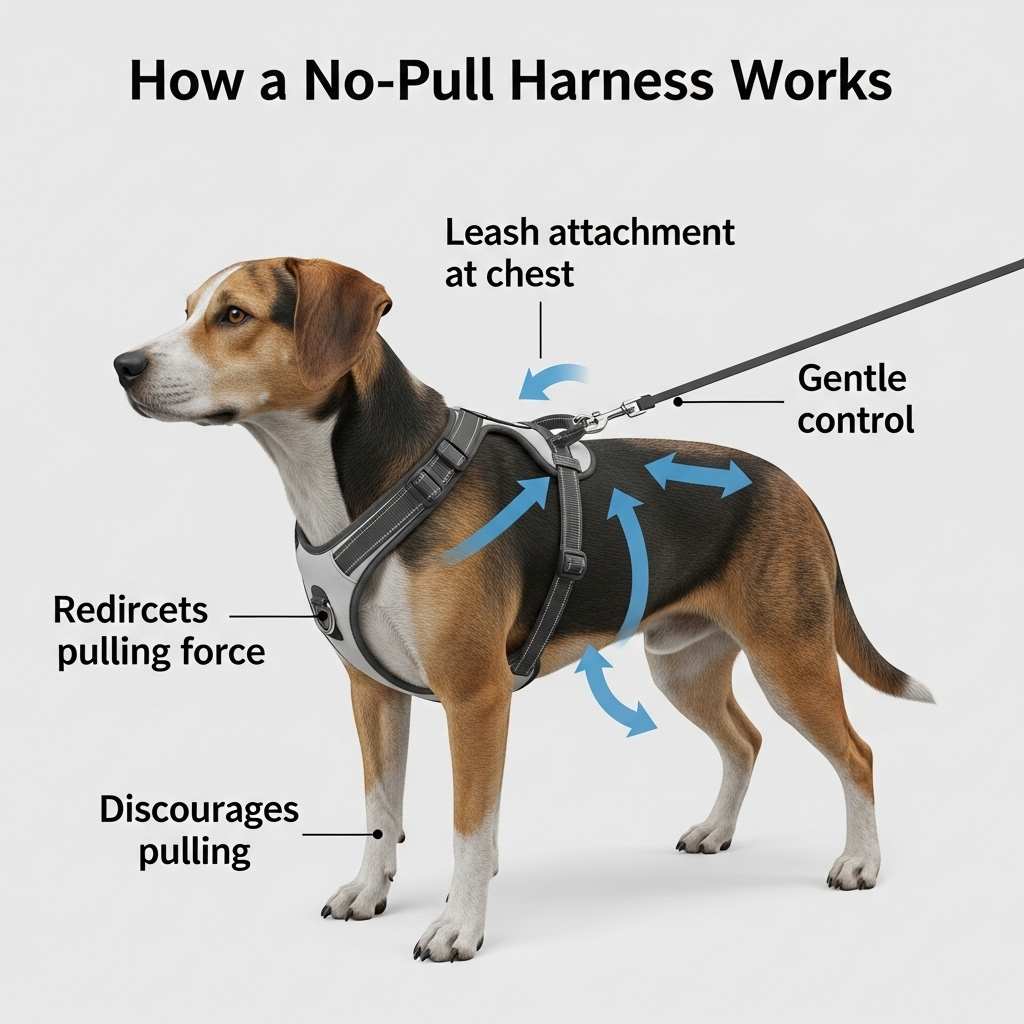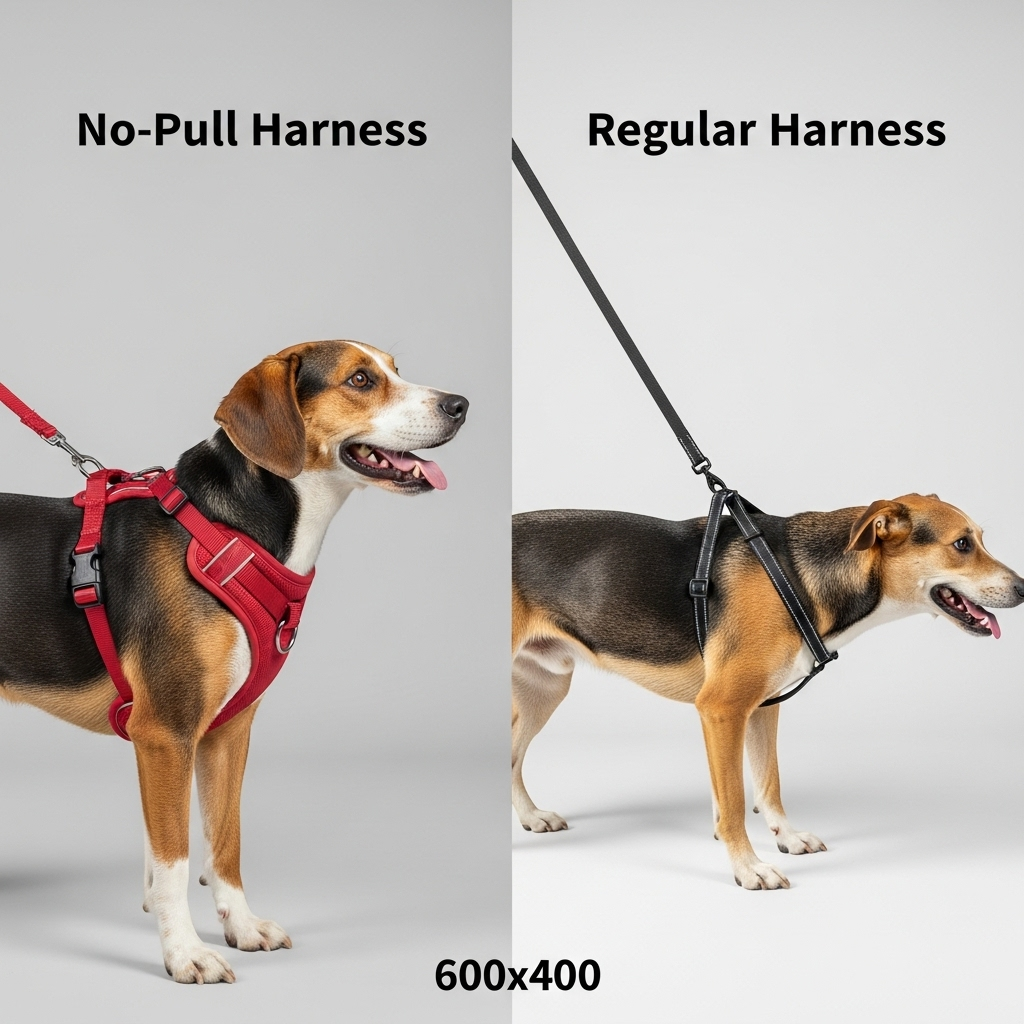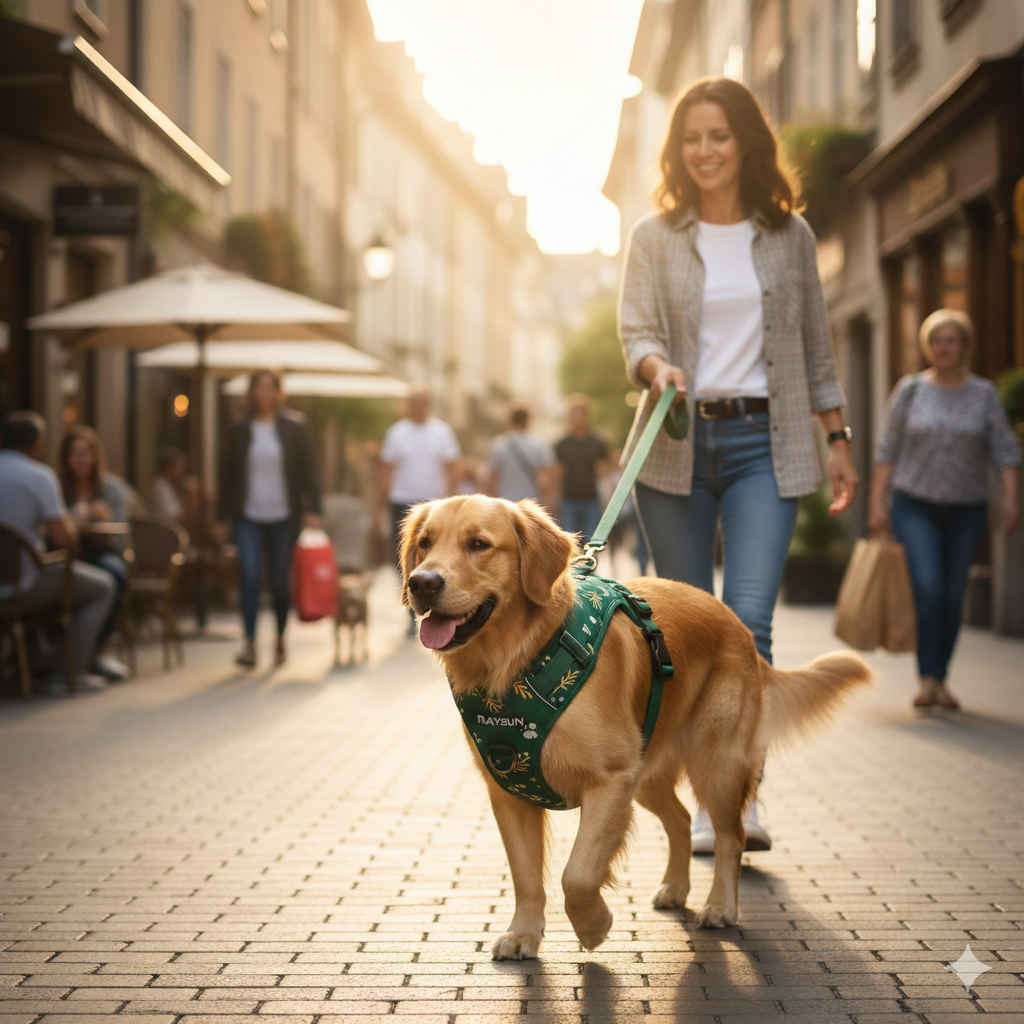Painful tugging on the leash can turn a walk into a frustrating chore. Are you tired of your arm being pulled out of its socket? A no-pull harness might be the answer.
Yes, no-pull harnesses really help manage pulling by redirecting your dog's forward momentum. Instead of pulling you forward, the front-clip design gently turns your dog back towards you, making it less rewarding and easier to correct their pulling behavior during walks.

A dog harness can be a truly effective and humane tool for walks. It helps me gently control my dog’s momentum and makes pulling so much easier to manage. I even believe a pet harness can save a dog’s life. But I’ve also seen that it isn't a magic wand. To get the most out of it, you need to understand how it works and what it's really designed to do. Let's look deeper into these tools.
Do no-pull dog harnesses really work?
You bought a no-pull dog harness, but your dog still pulls sometimes. It makes you wonder if you wasted your money. Understanding how they work is the key to seeing real results.
Yes, they work by using your dog's own body mechanics against the pulling behavior. The front dog leash attachment point is the key. When your dog pulls, the dog harness gently guides their chest and shoulders to the side, turning them back toward you and breaking their forward momentum.

A dog harness with a dog leash clip on the back can actually encourage a dog’s natural instinct to pull against pressure. It’s called the opposition reflex. You see it in sled dogs. But a no-pull harness with a front clip changes the game. It doesn't trigger that same reflex. Instead of a direct power struggle, it creates a gentle redirection. I saw this firsthand with a friend's stubborn beagle. The moment they switched to a front-clip harness, the pulling wasn't just weaker; the dog seemed confused by the new sensation and was much more responsive to commands. It doesn’t stop the behavior cold, but it makes it much easier to manage and train against.
Harness Clip Position and Its Effect
| Feature | Front-Clip (No-Pull) | Back-Clip (Regular) |
|---|---|---|
| Leash Attachment | On the dog's chest | On the dog's back/shoulders |
| Effect of Pulling | Turns the dog sideways | Allows dog to pull forward |
| Primary Use | Training to stop pulling | General walking, running |
| Control Level | High level of steering | Lower level of steering |
What is the #1 trick to stop your dog from pulling on the leash?
You're searching for that one magic trick to finally end the leash wars. You've tried everything, and you're feeling defeated. The real solution is actually simpler and more effective than any single trick.
The number one "trick" isn't a trick at all; it's consistent training. A no-pull dog harness is only a tool to help you train more effectively. The real key to stopping pulling is to teach your dog that walking calmly on a loose leash is more rewarding than pulling.

A no-pull harness is a management tool, not a training substitute. Think of it like training wheels on a bike. It makes the learning process safer and easier, but you still have to teach the kid how to pedal and balance. The best method I've found is positive reinforcement. When the leash is loose, reward your dog with praise or a high-value treat. When they start to pull, simply stop walking. Become a tree. Don't move forward until the leash is slack again. The harness helps here because when you stop, their forward pull is redirected, getting their attention faster. I remember feeling frustrated with my own dog, but combining the front-clip harness with this "be a tree" method was the breakthrough. The harness gave me the control I needed to implement the training consistently.
What is the difference between a no-pull harness and a regular harness?
Walking through the pet store, you see a wall of dog harnesses that all look the same. Choosing the wrong one can actually make pulling worse. The key difference is one small but critical detail.
The main difference is the location of the dog leash attachment point. A no-pull pet harness features a D-ring on the chest strap. A regular harness has the D-ring on the back. This single change completely alters how the harness performs when the dog pulls.

The design difference directly impacts your dog's behavior and your control. As a product designer, I focus on how these small changes affect function. A regular, back-clip harness is great for dogs that don't pull or for activities like running where you want to be behind your dog. But for a puller, it gives them all the leverage. A no-pull, front-clip harness gives you the steering. It's not just about pulling, though. A good harness offers safety. My friend Jack was camping when his dog, wearing a chest harness, fell into a hidden hole. The harness distributed the force and allowed him to safely lift his dog out. Had the dog been wearing a collar, it could have been a tragedy. Both types of harnesses are safer than a collar in situations like that, but for training a puller, the front-clip design is superior.
No-Pull vs. Regular Harness
| Feature | No-Pull Harness (Front-Clip) | Regular Harness (Back-Clip) |
|---|---|---|
| Leash Attachment | Chest (Front) | Back/Shoulders |
| Control Method | Redirects momentum sideways | Allows forward pulling |
| Best For | Leash training, strong pullers | Calm walkers, activities like cani-cross |
| Potential Issue | Leash can get tangled in legs | Can encourage the opposition reflex |
What is the best harness to teach a dog not to pull?
The number of dog harness choices is overwhelming. Pick the wrong one, and you could waste money and even make training harder. The "best" harness is the one that fits your dog and your training style.
The best harness to teach a dog not to pull is typically a well-fitted front-clip dog harness. It gives you gentle steering control without causing pain. The ideal harness is adjustable, padded for comfort, and designed to allow free shoulder movement for your dog's natural gait.

When I'm helping brands design gear, I always stress the importance of ergonomics. The same applies when you're shopping. Look for quality materials and multiple points of adjustment to get a snug, but not restrictive, fit. You should be able to fit two fingers between the harness and your dog. Check for any areas that might rub or chafe, especially behind the front legs. Some of the best models now come with both a front and a back clip, giving you options as your dog’s training progresses. However, a harness isn’t a miracle cure for every dog. I've seen some clever dogs learn slower with them, or find ways to pull anyway. In these rare cases, it can sometimes even put a trainer off-balance. That's why the harness must always be used with active, positive training. It’s a tool to make the job easier, not do the job for you.
Conclusion
A no-pull harness is an excellent tool for managing pulling. For lasting results, you must pair it with consistent, positive reinforcement training to teach your dog proper leash manners.
Cindy Long is the Sales Manager of Raysunpets and a pet lover with over 12 years of experience in exporting pet products. She specializes in providing customized dog chest carriers, leashes and pet accessory solutions for the European and American markets, always focusing on the real needs of customers and pets, and is committed to creating high-quality, practical and comfortable products that allow fur kids to live happier lives.


